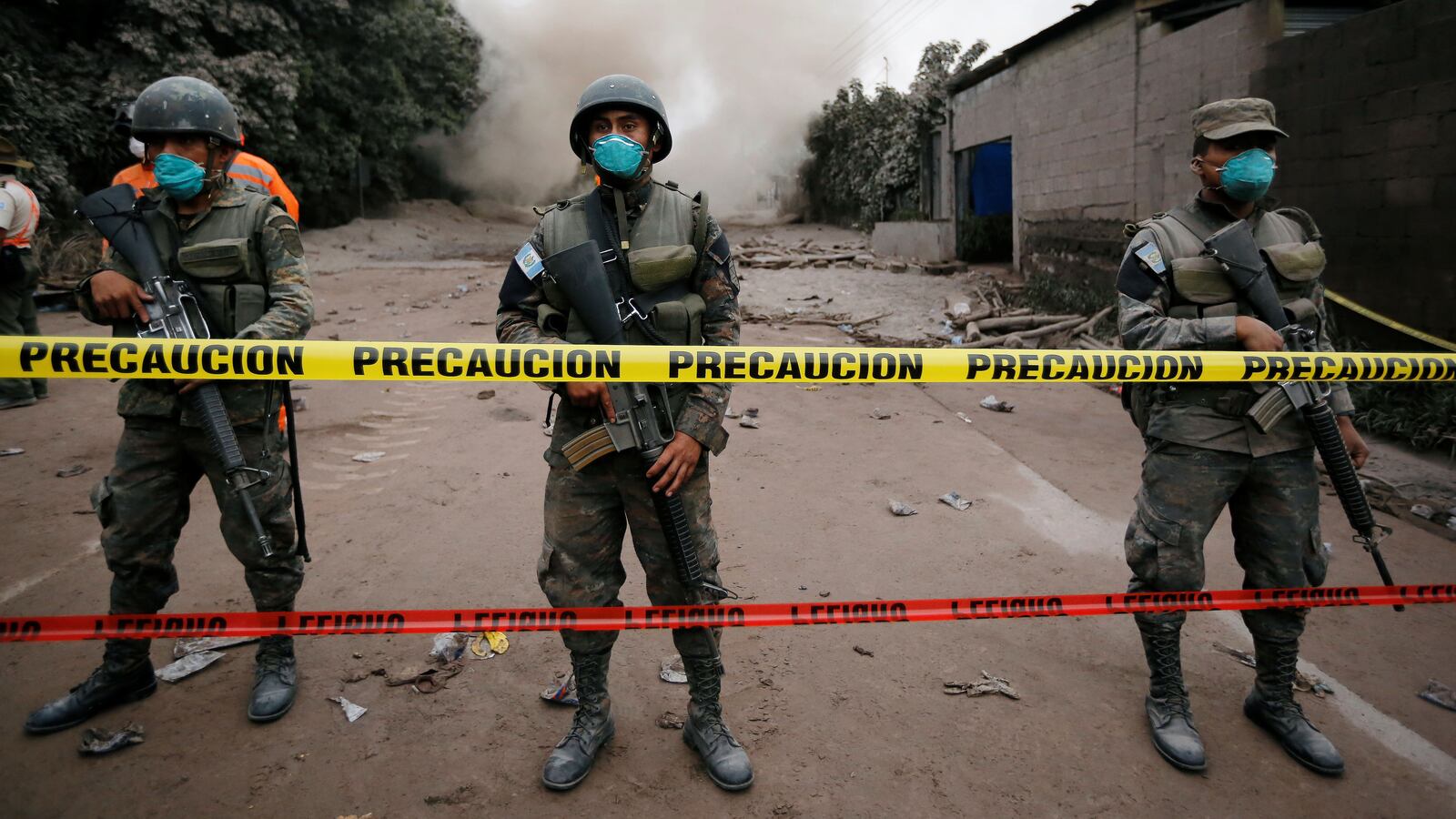Guatemala’s notoriously tumultuous volcano, Volcan de Fuego, exploded early Monday morning, spewing lava and billowing smoke into nearby villages.
As of late Monday, the death toll stood at 65 and was expected to rise, according to the Associated Press.
But Rebecca Williams, the head of geology at the University of Hull, said along with Fuego’s eruption came a spew of myths about volcanic eruptions and dangerous behavior.
First and foremost: “There is no connection” between Fuego and Hawaii’s Kilauea volcanic explosion,” she told The Daily Beast via email.
“Kilauea is a hotspot volcano, formed by an area of extra hot mantle, causing melting underneath, and in the middle of, the Pacific Plate.” Fuego, on the other hand, is a “subduction zone volcano,” which means it was formed along an active subduction zone along the western boundary of the Caribbean Plate.
Williams also said talk of some sort of uptick in volcanic eruptions is untrue, the result of the constant news overflow of the digital age. “There is no increase in the numbers of volcano eruptions,” she said. “Social media and online news reporting means we see far more eruptions than we were able to before. The spectacular images and videos shared means that there is greater public interest in these events too.”
We also can’t predict volcanic eruptions like Fuego. “Volcanoes are complicated natural systems,” she said. “Eruptions can be triggered by a variety of different processes. The best we can do is to monitor a volcano and look for signs that there are changes in the magma reservoir”—and if so, monitor closely to evacuate at the first sign of an impending eruption.
Williams added that at any point in time, there are about 20 volcanoes erupting. Last week alone, Williams said that 15 volcanoes erupted.
The biggest, most viral—and dangerous—myth that Williams has seen involves the description of stuff that has come out of Fuego and flowed out into nearby villages with such deadly force. Some have described it as “lava flow,” but Williams took to Twitter early Monday to dispel that myth, saying the river of rock, ash, and gas that was tumbling through villages was not lava flow but rather was something called pyroclastic density currents.
In fact, Williams said on her Twitter thread, it’s not lava flow that has killed thousands of people from volcanic eruptions, but rather pyroclastic density currents, sometimes referred to as pyroclastic flow. The reason why they’re dangerous is that they’re the volcanic version of an avalanche, composed of toxic chemicals, 1,000 degree Celsius gases, rocks, and ash.
That makes lava flows—the rivers of magma flowing from Hawaii’s Kilauea—seem tame in comparison. “They tend to be sluggish, oozing out of a volcano,” Williams said. “They form during effusive eruptions and largely, you can walk or run out of the way of advancing lava.”
That’s not the case with pyroclastic density currents. Those “are flows of searing hot ash, gas, and rocks. They form during explosive volcanic eruptions, [traveling] at hundreds of miles per hour. They can surmount valley walls. You can’t outrun them, and they typically travel faster than a car, so you can’t outdrive them.”
The term was first coined in the aftermath of the deadly 1902 eruption of Mount Pelee in Martinique, where pyroclastic density killed about 30,000 people in a matter of minutes. In total, they’ve killed 90,000 deaths since 1600 AD. Lava, on the other hand? Just a couple hundred deaths in that same time period, according to Williams.
Williams stressed that speed of these pyroclastic currents was what made them especially dangerous: They can tumble at speeds up to 450 miles per hour.
Which makes the fact that people filmed the oncoming pyroclastic current that much more frightening and life-threatening:
And that’s what made them more dangerous than other similar eruptions. “The pyroclastic density currents were bigger… than they had been previously,” she said. “They spilled out of the valleys they were traveling down, impacting local towns.”
In any case, Williams said those flows were probably singlehandedly responsible for the deaths reported in Guatemala.
And one thing to keep an eye out for? Lahars—loose deposits of ash and rock that mix with water (plentiful, since it’s Guatemala’s rainy season) to create deadly mudflows, which can continue long after the volcano has ceased to erupt, said Williams.
For as much as science has advanced, we still don’t know much about volcanoes and how they actually work. “What happened to the volcanic system to trigger a significantly bigger event is still an unknown,” she said. What ultimately made Fuego burst, in other words, remains a mystery.





